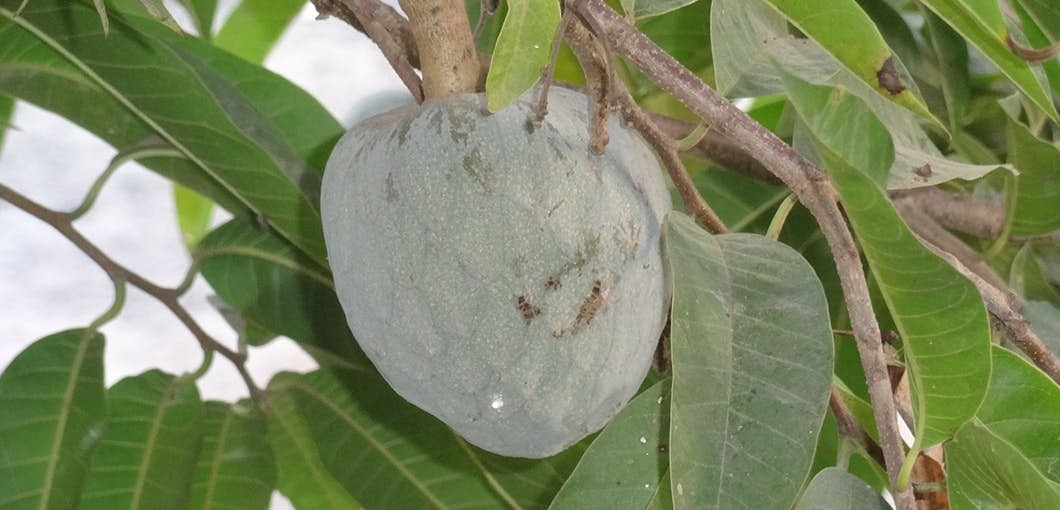
The Cancer Cure That Grows On Trees
Studies show that a certain species of tree is practically a neighborhood pharmacy when you look at all the things it can do. Scroll down and find out!
Continued below...
Breast Cancer Breakthrough BANNED! A mammoth discovery is wiping out most breast tumors better than anything seen yet in modern medicine. It makes surgery, radiation and chemotherapy look like something from the Dark Ages. A Cornell-educated doctor followed more than 25 years of case studies and PROVED this treatment can cure breast cancer. With the discovery I'm going to tell you about, almost every woman makes it and without losing a breast to surgery or taking any toxic chemicals. Even those with late stage cancer! You've got to include this treatment if you want to have any REAL hope of defeating breast cancer. Click here now and watch a new video presentation about this important discovery… |
1. The bark has properties powerful enough to fight the most fearsome fungus…
2. The unripe fruit has been used to treat diarrhea and dysentery…
3. The leaves, roots and stem have been shown to clobber in bacteria grown in lab cultures…
4. The plant seeds are known to send parasites packing…
5. The root bark has been used to tame raging fevers…
6. A leaf extract stood its ground against malaria…
And best of all—a 1976 National Cancer Institute plant screening declared that the leaves and stem of this remarkable plant could even poison and kill cancer cells naturally.
So what is it called? Well, it depends on who you ask!
In Brazil it's called chirimoya… elsewhere in Latin America people call it guanábana… other people know it as soursop or custard apple… but in English, most people call it graviola.
This small, evergreen tree typically is found in the rainforests of Central and South America, Africa and Southeast Asia. The tree produces a large heart-shaped fruit with a yellow-green, prickly skin and white, fleshy fruit inside.
This is no ordinary fruit! Indigenous people have long understood and treasured graviola's medicinal value. After the groundbreaking research of the National Cancer Institute, the Western world sat up and began to take note…
What makes graviola such a fierce cancer warrior?
In 1977, researchers at Purdue University used grant money from the National Cancer Institute to answer that question.
They narrowed down a group of plant chemicals in graviola called annonaceous acetogenins that seemed to pack a powerful punch. The in vitro (test tube) studies suggested the acetogenins had an amazing ability to inhibit cancer cells—while leaving healthy cells untouched.
Apparently, graviola plant chemicals can attach to tumor cells and stop them from reproducing. Eventually the acetogenins go in for the kill and wipe out the cancer cells!
Some critics of this natural wonder argue that in vitro studies don't tell the whole story. They say we need in vivo studies (where real, live humans take the substance) to determine if it's safe and effective.
Well, hold on to your hats! The July 2011 Journal of Nutrition and Cancer1 published study results conducted by researchers from Virginia Tech in Blacksburg, VA (near Cancer Defeated's home offices, as it happens).
These scientists discovered that dietary graviola fruit extract (GFE) "selectively inhibited the growth" of breast cancer cells—both in lab cultures AND in live humans.
These findings fall right in step with a host of study results published by research groups in the U.S., China and India.
You should know that graviola isn't the only plant that contains the acetogenin cancer warriors. In fact, some research about acetogenins focuses on those from another plant…
Graviola's got a cousin named Pawpaw!
I'm talking about a remedy we featured in Issue #53: the pawpaw tree. You don't have to go to the rainforest to find this one. It's native to eastern North America and produces the area's largest edible fruit. You can view this back issue and others by visiting our issue archive at www.cancerdefeated.com/newsletters
Native Americans and early settlers used the tough inner bark of the pawpaw tree to make ropes, fishing nets, and mats. The bark, leaves and twigs also contain natural insecticides that can be used to make organic pesticides.
As a Professor of Pharmacognosy at Purdue University, Dr. Jerry McLaughlin spent over 20 years studying the pawpaw tree. He found that there were differences in the potency of trees based on their geographical location. (In case you were wondering, pharmacognosy is the study of medicines that come from natural sources.)
Dr. McLaughlin learned that the highest concentrations and most powerful acetogenins were in the Asimina triloba species of the pawpaw. These acetogenins drastically reduce ATP energy produced by cancer cells.
Without sufficient energy—the cancer cells eventually choke and die!
Dr. McLaughlin's research uncovered 50 acetogenins in pawpaw, compared to 30 found in graviola. Further, he discovered a 'double-ring' chemical structure in pawpaw as opposed to a weaker single ring chemical structure in graviola.
Based on his findings, Dr. McLaughlin developed a procedure to standardize pawpaw extracts containing a certain amount of acetogenins, and licensed it to a company in Utah.
There are several companies that offer graviola and pawpaw herbal supplements through online and retail stores. Be sure to consult a medical practitioner if you want to include either nutrient as part of a cancer treatment regimen.
In any case, despite the funny names—these herbs are shaping up to be some top-notch natural cancer killers!
In the last issue we wrote about an exciting new exercise breakthrough that almost every person reading this should take advantage of. It's absolutely the easiest form of exercise there is. Meaning, with almost no effort you can reap a huge reduction in your risk for a whole bunch of diseases, including cancer. If you missed this exciting development, scroll down and find out about it now.
Best regards,

Lee Euler,
Publisher




